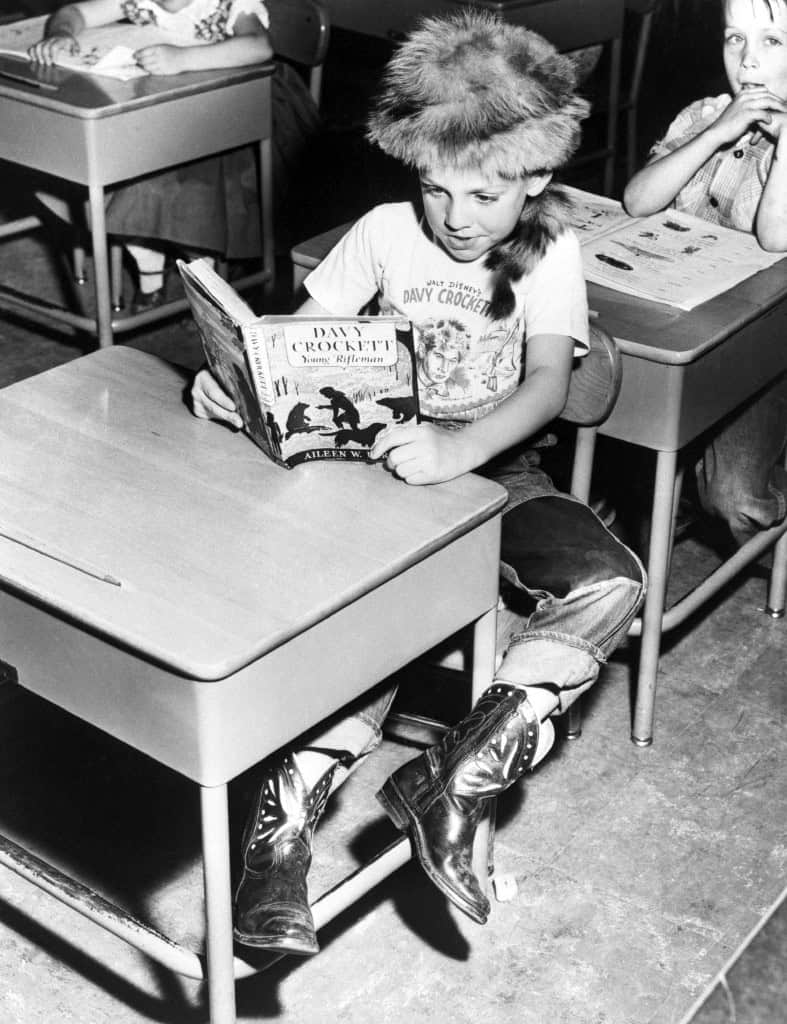TV Westerns Were A Bonanza For Kids And Toy Marketers.
By David Cohea, ReMIND Magazine
The first TV Western was a Hopalong Cassidy movie broadcast on June 24, 1949. Before long there was a stampede of B-movie Westerns into living rooms across America. The first generation of TV kids couldn’t get enough of them.
The networks were quick to notice and began churning out made-for-TV Westerns. Merchandisers were close behind offering a bonanza of cowboy-branded gear to an eager buying public.
The love affair between kids and cowboys started with radio serials of the ’30s and ’40s. Sales of cowboy and Indian toys began to take off. Books and comic books were especially popular. But it wasn’t until television began broadcasting the faces of the Lone Ranger and Tonto that there was a salable image to put on the cover of a toy box. Toys spawned by the TV show, which ran from 1949 to 1957, included Lone Ranger games, toy guns, lunch boxes, play sets, alarm clocks, and action figures and horses, and would continue for eight decades — one of the oldest and longest-living franchises in toy marketing.
Playing Hopalong Cassidy, William Boyd was a genteel cowboy wearing a black hat and suit (contrary to Hollywood cowboy hero fashion). New shows were filmed especially for children and his ratings soared.
Like his fellow TV cowboys, Boyd readily saw how his name could sell products. He even made a film to show companies how they could increase their business using his character’s name. Many advertisers did just that, and Hoppy’s name was on everything — clothing, accessories, games, toys, trading cards, books, furniture, school supplies, kitchen utensils, milk and bread. In 1950 alone, $70 million of Hopalong Cassidy merchandise was sold, accounting for 56% of retail sales of cowboy-hero related merchandise.
Walt Disney ran Davy Crockett as a five-part miniseries in 1954 starring Fess Parker as the “King of the Wild Frontier.” Surprising everyone, the show was a runaway success. Disney hastened to license a range of Davy Crockett items, including coonskin caps and bubble gum cards.
Roy Rogers had already enjoyed a dual career as a singing and movie star when he launched The Roy Rogers Show in 1951 on NBC-TV. With his faithful cast of wife Dale Evans, golden palomino horse Trigger, wonder dog Bullet, sidekick Pat Brady and Brady’s jeep Nellybelle, every week the Rogers gang rescued the weak and helpless from rustlers, shady lawmen, bank robbers and other bad guys.
Roy Rogers toys became the rage. A big seller was the Roy Rogers Trick Glow-in-the-Dark Lasso, which used an Air Force invention to create a lasso that would lay flat in the air and allow any kid to “spin like the dickens,” as one satisfied customer put it.
Gene Autry was a popular singing, radio and movie star when he launched The Gene Autry Show on CBS in 1950. Autry rode his horse Champion to adventure along with his goofy sidekick Pat (Pat Buttram). The show’s theme song, “Happy Trails,” most kids knew by heart. A toy Gene Autry cap pistol made by Kenton Hardware Company was very popular; by 1939 more than 2 million units had been sold. Autry’s horse got his own spinoff show The Adventures of Champion, and Autry was the executive producer of Annie Oakley, with Gail Davis in the title role of the legendary female sharpshooter. Girls found a unique role model for their Western dreams, and sales of Annie Oakley fringed outfits at retailers were brisk.
The appetite for cowboy toys extended well into the ’60s and ’70s, but regulations on toy marketing and safety slowly fenced in the blue-sky opportunity of earlier decades.
Eventually Western toys became like Sheriff Woody in Toy Story, replaced by the splashy space cowboy Buzz Lightyear. But the value of those old Western toys continued to rise over the years, and collectors bid eagerly for vintage Gene Autry six-shooter watches, mint-condition Lone Ranger comic books and Annie Oakley fringed skirts and vests.
And if you really want to ride the old frontier of kids’ Westerns, the stuffed remains of Roy Rogers’ horse Trigger sold in a 2010 auction for $266,000.

